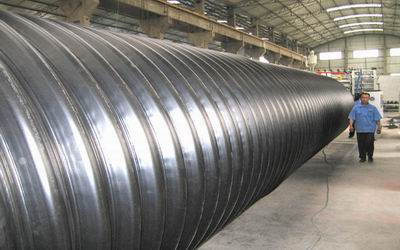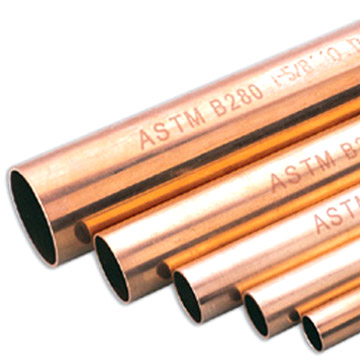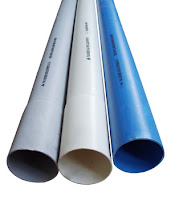Thursday, July 7, 2011
Saturday, June 25, 2011
Types and Uses of Hose Pipes
Hoses are made from different types of materials to customize the applications they are put. In ancient times, the tubes were of rubber and its compounds, which were made very voluminous, and are not easily moved from one place to another. They were also easily damaged and difficult to repair it. Now the hoses are made of polyvinyl chloride, the chemical miracle of the last century that has received enormous applications throughout the world.
The PVC tubes Virgin Grade made of PVC and includes range of hose materials: flexible hoses, PVC Flexible Pipes, PVC Garden Pipes & Hoses, PVC Hoses, Sanitary Waste Connection Pipes & Tubes, Reinforced nylon thread braided hoses, double layer of Triple garden hoses, Doris solid, PVC strips, tapes and profiles. A wide range of products are manufactured in various sizes. Many different types of hoses are manufactured for each different type of use, such as pneumatic hoses, water hoses, welding hoses, chemical hoses, car washing hose, sanitary hose connection and a number of other hoses.
The hoses for pneumatic applications are usually nylon tubing, in which the nylon yarn between the inner and outer layers of the hose, the higher resistance to high pressure, is not fused to resist the problem of fission. They are resistant to various chemicals, oils and other aggressive substances. The water hose pipes, as the name suggests are made for use in transport of water and are co-extruded flexible ones very useful for gardening, construction and irrigation. They put in sizes from 1 / 2 ", 3 / 4" & 1 ".
 Another type of hose is welded tubes, that the welding machine to connect with the welding electrodes carrying gas for autogenous welding purposes and cutting equipment. Chemical and pesticide Tubes pipes nylon braided hoses are used to pump chemicals and pesticides are insecticides, fungicides, weeding, etc. The car wash hose abrasion and chemical resistant three-layer double-reinforced high pressure hoses, which are mostly used in garages and service stations car washing purposes.
Another type of hose is welded tubes, that the welding machine to connect with the welding electrodes carrying gas for autogenous welding purposes and cutting equipment. Chemical and pesticide Tubes pipes nylon braided hoses are used to pump chemicals and pesticides are insecticides, fungicides, weeding, etc. The car wash hose abrasion and chemical resistant three-layer double-reinforced high pressure hoses, which are mostly used in garages and service stations car washing purposes.
see : Applications and Uses of Steel Pipes and Tubes
The PVC tubes Virgin Grade made of PVC and includes range of hose materials: flexible hoses, PVC Flexible Pipes, PVC Garden Pipes & Hoses, PVC Hoses, Sanitary Waste Connection Pipes & Tubes, Reinforced nylon thread braided hoses, double layer of Triple garden hoses, Doris solid, PVC strips, tapes and profiles. A wide range of products are manufactured in various sizes. Many different types of hoses are manufactured for each different type of use, such as pneumatic hoses, water hoses, welding hoses, chemical hoses, car washing hose, sanitary hose connection and a number of other hoses.
The hoses for pneumatic applications are usually nylon tubing, in which the nylon yarn between the inner and outer layers of the hose, the higher resistance to high pressure, is not fused to resist the problem of fission. They are resistant to various chemicals, oils and other aggressive substances. The water hose pipes, as the name suggests are made for use in transport of water and are co-extruded flexible ones very useful for gardening, construction and irrigation. They put in sizes from 1 / 2 ", 3 / 4" & 1 ".
 Another type of hose is welded tubes, that the welding machine to connect with the welding electrodes carrying gas for autogenous welding purposes and cutting equipment. Chemical and pesticide Tubes pipes nylon braided hoses are used to pump chemicals and pesticides are insecticides, fungicides, weeding, etc. The car wash hose abrasion and chemical resistant three-layer double-reinforced high pressure hoses, which are mostly used in garages and service stations car washing purposes.
Another type of hose is welded tubes, that the welding machine to connect with the welding electrodes carrying gas for autogenous welding purposes and cutting equipment. Chemical and pesticide Tubes pipes nylon braided hoses are used to pump chemicals and pesticides are insecticides, fungicides, weeding, etc. The car wash hose abrasion and chemical resistant three-layer double-reinforced high pressure hoses, which are mostly used in garages and service stations car washing purposes.see : Applications and Uses of Steel Pipes and Tubes
Applications and Uses of Steel Pipes and Tubes


Steel and pipes do not corrode easily, unlike metals, even when exposed to water constantly, which makes them even for under-sea pipe-laying works including oil rigs and suitable. These are durable and fire resistant, which in turn helps the clients save a lot of money by way of insurance premium. The best part is that these are recyclable and can be used many times in various forms and shapes are. There are many steel manufacturing units and suppliers, steel pipes and customized to meet the specific needs of users. Stainless steel tubes are manufactured for many purposes. Of potable water lines to bill boards and posters and hand rails are steel tubes in various applications in our daily life.
Carbon steel pipes are known for their durability and corrosion resistance are known and used in various industries. Available in various sizes and specifications, these pipes in various grades and specifications are available. Internet provides information on various steel producing companies and their products and is an ideal medium to look for new products, product catalogs and innovative designs from home. There are actually a number of options to choose from at very reasonable prices.
B2B marketplaces are great places to gather information on the latest products in steel pipes and information about fairs and exhibitions and also meet with other providers in the area to be. SLS Stainless Pvt. active in manufacturing and exporting of steel pipes, steel pipes and tubes, carbon steel pipes.
see :Characteristics of PVC Fitting
Friday, June 24, 2011
Characteristics of PVC Fitting

 PVC or Polyvinyl chloride - is a tough polymer with high resistance to chemical and light effects and the relatively low heat resistance. PVC is a thermoplastic, obtained by the polymerization of vinyl chloride. This material is by spraying a coating on a surface as a protection against the effects of the environment and are also used decoratively. Of the more compact varieties of PVC, elements of disposable tableware and ending with pipes and fittings. Of course, polyvinyl chloride, which uses the production of corrugated board, and he used to PVC fittings - not the same. Much depends on the additives, polymerization, and so on. But some basic properties - resistance to external influences.
PVC or Polyvinyl chloride - is a tough polymer with high resistance to chemical and light effects and the relatively low heat resistance. PVC is a thermoplastic, obtained by the polymerization of vinyl chloride. This material is by spraying a coating on a surface as a protection against the effects of the environment and are also used decoratively. Of the more compact varieties of PVC, elements of disposable tableware and ending with pipes and fittings. Of course, polyvinyl chloride, which uses the production of corrugated board, and he used to PVC fittings - not the same. Much depends on the additives, polymerization, and so on. But some basic properties - resistance to external influences.PVC fittings for plumbing networks used as drinking water, since this material is nontoxic and does not emit any harmful substances. In this he compared with the metal oxide product, which always get in tap water. Since PVC is resistant to chemicals, pipes from active use in the chemical industry, and indeed in all areas that require the transport of aggressive fluids. PVC pipes are not under the influence of acid or alkali, collapse, and therefore is much more durable than metal.
see :Home Repair Tips of Tubing and Fittings
Thursday, June 23, 2011
Home Repair Tips of Tubing and Fittings
There are three basic ways to join pipe and tube: 1. Pour into the joint lead 2.screwing pipes and threaded fittings soldering or gluing 3.Collage At some plumbers pipe joints tight black iron with hot water, lead liquid. Today, however, sewer pipes are attached to flanges and neoprene gaskets. Most of galvanized pipes are threaded. They can be screwed together without any preparation, but the seal until it rusts closed. It is also very dif ficult to turn the hoses. Teflon tape makes it easier and joints, and joints. Be careful though.
Teflon turns the son so easily that you can tighten them too far and break the pipe. The copper tubes are usually welded. Clean the joint with steel wool or sandpaper. Do not touch the joint after cleaning. Your fingers can leave a little fat will push the welds. Apply a light coat of soldering flux corrosive to the ends together, both in and out. Assemble the joint just as it will be when finished. Now the light of a propane torch. When the flame moves, move the torch to the tip of the flame is blue-inch 1 / 2 to 3 / 4 of the town. Heat the whole joint and along the tube 2 to 3 inches in all directions. Watch where you point the flame. Heat until the flux begins to boil. Do not overheat.
Remove the torch and touch the solder to the end of the joint. If the seal is clean and fluxed and heated at the right temperature, the solder will melt immediately and circulate throughout the joint. Do not move the joint until the solder has cooled. If the joint is too hot, the solder will not stick. In this case, use pliers to pull the joint apart hot. Allow to cool, clean, feed, and try again. You can not solder a wet seal. Even a drop of water is too.
If you turned off all the valves and open all faucets, water still flows through the line, stuff some bread upstream from the line. This will prevent the water long enough to weld. Later, when you turn on the water, the bread will dissolve and be flushed from the nearest tap. Seals plastic pipes are the same as the copper pipe joints, except that they are cemented rather than welded. After cutting and cleaning the edges with a file and a knife, a brush of cement around the outside of the pipe and inside the fitting.

Plastic cement is really a solvent which dissolves the plastic surface. When it evaporates (in about 10 seconds), the joint is fused. This does not give you much time to the position of the joint and wipe off excess cement. After plastic pipe has been attached, there is no way to remove it except by cutting.
see :The advantages of plastic piping
Teflon turns the son so easily that you can tighten them too far and break the pipe. The copper tubes are usually welded. Clean the joint with steel wool or sandpaper. Do not touch the joint after cleaning. Your fingers can leave a little fat will push the welds. Apply a light coat of soldering flux corrosive to the ends together, both in and out. Assemble the joint just as it will be when finished. Now the light of a propane torch. When the flame moves, move the torch to the tip of the flame is blue-inch 1 / 2 to 3 / 4 of the town. Heat the whole joint and along the tube 2 to 3 inches in all directions. Watch where you point the flame. Heat until the flux begins to boil. Do not overheat.
Remove the torch and touch the solder to the end of the joint. If the seal is clean and fluxed and heated at the right temperature, the solder will melt immediately and circulate throughout the joint. Do not move the joint until the solder has cooled. If the joint is too hot, the solder will not stick. In this case, use pliers to pull the joint apart hot. Allow to cool, clean, feed, and try again. You can not solder a wet seal. Even a drop of water is too.
If you turned off all the valves and open all faucets, water still flows through the line, stuff some bread upstream from the line. This will prevent the water long enough to weld. Later, when you turn on the water, the bread will dissolve and be flushed from the nearest tap. Seals plastic pipes are the same as the copper pipe joints, except that they are cemented rather than welded. After cutting and cleaning the edges with a file and a knife, a brush of cement around the outside of the pipe and inside the fitting.

Plastic cement is really a solvent which dissolves the plastic surface. When it evaporates (in about 10 seconds), the joint is fused. This does not give you much time to the position of the joint and wipe off excess cement. After plastic pipe has been attached, there is no way to remove it except by cutting.
see :The advantages of plastic piping
The advantages of plastic piping

The advantages of plastic piping - The most obvious advantage is the lightness of the pipe, which makes for ease of handling, but the most important advantage is the ease with which plastic can be cut and joined. This means that the skill level you need to undertake a particular task plumbing is greatly reduced, as is the amount of time you need to achieve it. Both systems are strong and durable, more resistant to frost a conventional plumbing system and, unlike the latter, not subject to corrosion. Last but not least, they are competitive.
Plastic pipes are less susceptible to frost, because the plastic is a poor conductor of heat from the metal (which means that, unlike metals, it provides a certain amount of insulation), and because it has a greater elasticity. This means that plastic pipes are not only less likely to freeze as metal, but also in the case of their doing, they are much less likely to burst. The greater degree of plastic insulation provides also brings other benefits: it results in less waste heat radiator hose connects (or between the hot water tank and hot water taps), and This means that less insulation is needed for the pipes need to be protected against the cold.

Plastic pipes are not subject to corrosion simply because the plastic is not attacked by water. Electrolytic corrosion, resulting in the accumulation of hydrogen gas and the black sludge of iron oxide (magnetite) and can eventually lead to leaking radiators and pump failure at the beginning, is much less problem when a central heating system is equipped with plastic pipes.
It also means that the plastic is a safe material to use for your drinking water pipes as metal, whose use may in certain circumstances, pose a risk to health. A final point to keep in mind before replacing metal pipes with plastic ones is that the plastic is a non-conductor of electricity. This means that all plastic plumbing systems can not be used to land a domestic electricity supply.
see also : Things To Know : Plumbing Supply
Plastic pipes are less susceptible to frost, because the plastic is a poor conductor of heat from the metal (which means that, unlike metals, it provides a certain amount of insulation), and because it has a greater elasticity. This means that plastic pipes are not only less likely to freeze as metal, but also in the case of their doing, they are much less likely to burst. The greater degree of plastic insulation provides also brings other benefits: it results in less waste heat radiator hose connects (or between the hot water tank and hot water taps), and This means that less insulation is needed for the pipes need to be protected against the cold.

Plastic pipes are not subject to corrosion simply because the plastic is not attacked by water. Electrolytic corrosion, resulting in the accumulation of hydrogen gas and the black sludge of iron oxide (magnetite) and can eventually lead to leaking radiators and pump failure at the beginning, is much less problem when a central heating system is equipped with plastic pipes.
It also means that the plastic is a safe material to use for your drinking water pipes as metal, whose use may in certain circumstances, pose a risk to health. A final point to keep in mind before replacing metal pipes with plastic ones is that the plastic is a non-conductor of electricity. This means that all plastic plumbing systems can not be used to land a domestic electricity supply.
see also : Things To Know : Plumbing Supply
Subscribe to:
Comments (Atom)
.jpg)





